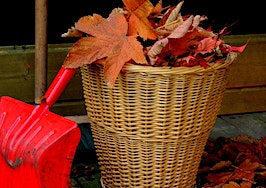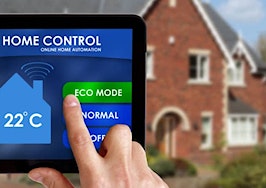Between holiday entertaining and plunging temperatures, energy bills inevitably go up in the winter. That’s the bad news. The good news is that the homebuying public is looking for energy efficiency. A few simple steps can help tighten up a home and showcase its best energy saving features.
Samantha Strong, Broker/Owner of Metamorphosis in Minneapolis, Minnesota, is especially well-situated to assess energy efficiency in a home during the holiday season.
“Here in Minnesota, it’s pretty obvious when a house is more energy efficient or ‘tight,'” Strong told Inman. “A buyer just needs to be observant, and it’s our job to help them know what to look for.”
Strong, who participates in NAR’s Green Designation program, looks for telltale signs of inefficiency that pop out in winter. That includes snow melting on all sides of a roof instead of just the south side, ice forming on the roof or gutters, “extreme” icicles, frost inside of windows, and blinds or curtains that rustle even when windows are closed.
Fixing these problems is not rocket science, though it may require an investing in a new furnace and new windows, or at least new caulking.
To prevent heat from escaping the house, blowing new insulation into walls is not always necessary. The experts advise that simply improving the attic insulation is far less expensive and much more effective.
Savvy buyers also know that open hearth fireplaces are notorious energy-suckers. That’s especially true of older fireplaces where the damper may be warped or cracked. A snugly fitting new damper and glass insert can make a big difference.
Wood burning heaters and stoves provide another opportunity for an upgrade. Today’s EPA Energy Star certified wood stoves are 50 percent more efficient than their older cousins.
If a new wood stove is in order, consider a pellet stove. On top of being more efficient than conventional wood stoves, pellet stoves are more convenient to operate.
Whether conventional or pellet, right-sizing is also a key factor for wood heat — and bigger is definitely not always better. Wood stoves that are too big have to be run low. Aside from being inefficient, low-running stoves are a significant source of air pollution.
The US Department of Energy offers this rule of thumb for sizing pellet stoves: A stove rated at 42,000 Btu can heat 1,300 square feet. For 2,000 square feet, a rating of 60,000 Btu is appropriate.
Homes with rooftop solar panels require some explanation during the winter months. Solar panels actually work very well in the winter, despite there being less sun. That’s because low temperatures and snow-reflected light improve solar performance, and the seasonal increase in precipitation helps keep the panels free of dust and debris.
In addition, solar panels can still produce electricity under a light covering of snow, though a thick, stubborn layer may have to be cleared manually.
Speaking of solar panels, seasonal winterizing should also include electrical systems. That’s because many utilities provide information on average costs in their area, giving buyers a handy point of comparison.
At minimum, energy efficient homes should have LED lighting with timers, programmable thermostats, and Energy Star appliances.
App-based home energy management systems like Nest can be especially helpful for keeping utility costs down, as they allow for flexible schedules and sudden changes in plans.
On the other hand, Strong advises agents not to get too hung up on details:
“Technical data might appeal to the occasional enthusiast, but generally speaking, quantifiable results are more appealing,” Strong said. “If the home is less expensive to run or more comfortable to live in, that is a tangible selling point.
In addition to the appeal of cost savings, a low environmental footprint, and new technology, agents can also point out the health and safety value of living in a home that is properly equipped and prepped for the holiday season, and all year long.












